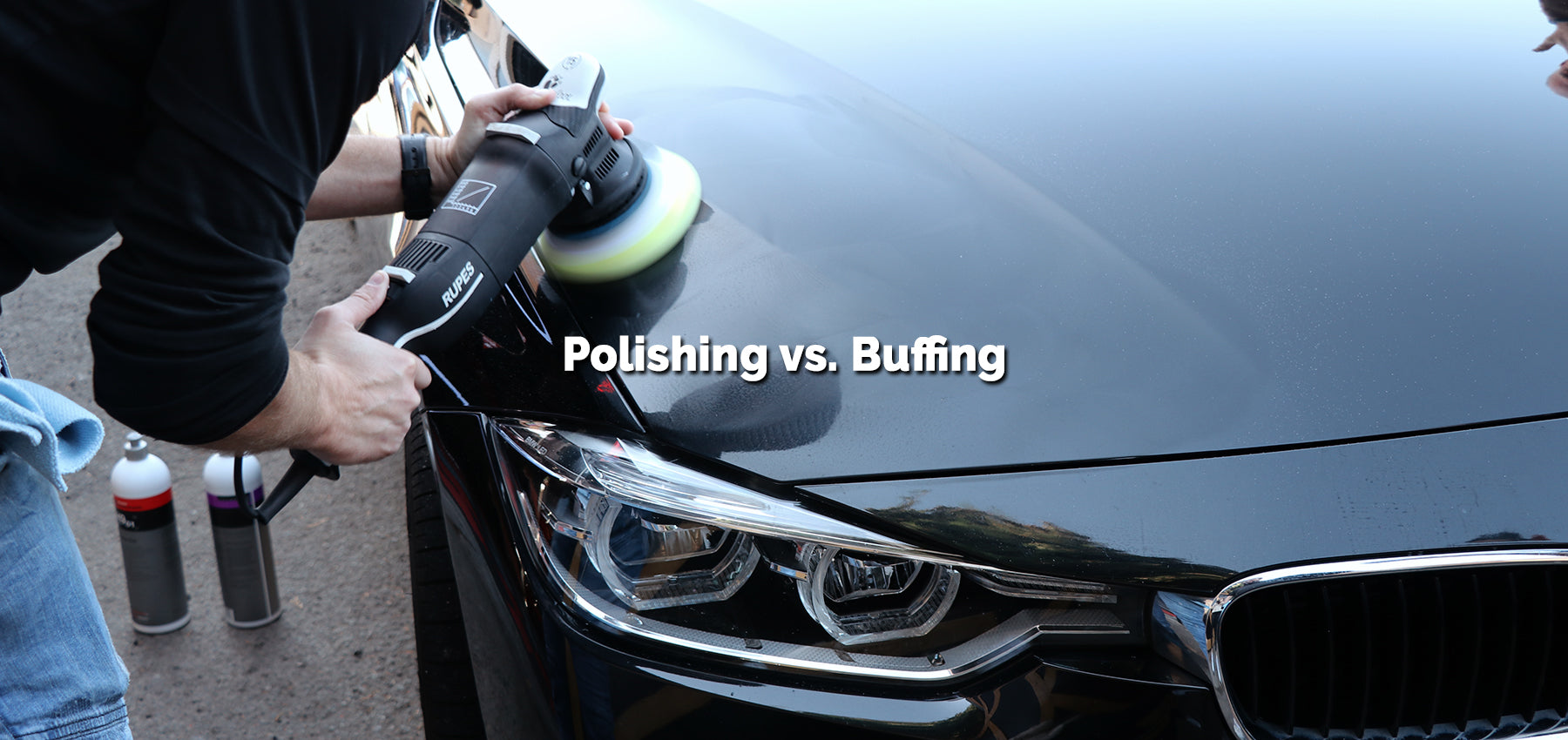0333 222 9944

What's The Difference Between Polishing and Buffing?

A lot of the terminology used in detailing tends to have been adopted by us from our American cousins. Even the word "detailing" is an Americanism we have adopted as, let’s be honest, "washing my car" just doesn’t do it justice. "Polishing" in the UK used to refer to the process of applying a hand wax or polish after the car had been washed, whereas now we use the term polishing to refer to the process of removing scratches and imperfections from the paintwork before applying a hand wax or final detailer. "Buffing" is the term used to achieve the final shine, this can be with a soft cloth or even using a machine to ‘buff’ the surface to the final shine.
Using a machine polisher for paint correction will give the best and quickest results. Depending on the level and depth of the scratches, this would normally start with a heavy to medium compound. There are different types of polisher which we will cover in a further blog but in short you can choose between a Rotary or Dual Action or DA machine.

On a rotary machine, the pad spins around the spindle in a circle, generally this achieves the quickest and most aggressive scratch removal. This is also generally regarded as a machine for the experienced user as it is easy to burn and remove paint too quickly so would not be a tool for the novice. The DA not only spins around the spindle of the machine but also throws itself around a second orbit meaning the pad is moving off centre and in a much less aggressive manner making it more controllable and easier to use. This would be the sort of polisher most people would start with and many would continue to use as, in the right hands, great results can be achieved.
When using a polisher to remove scratches, it is always best to use caution as ultimately you are removing layers of paint or lacquer and lowering the top surface of the paint around the imperfection to the lowest point of the scratch. Depending on compound, polisher, and how it is being used, this will only be microscopic layers, but either way it is layer removal. If you are removing simple holograms and basic scratching then a medium to fine compound will achieve this quite easily and by starting here it will quickly become apparent if a coarser compound is required and in some cases using very fine sand paper may be required before the polishing process to help remove all imperfections and scratches.
Another way to polish the surface of the paintwork and to hide the scratches is to use a compound or polish with filling properties. This sort of product hides the imperfections by filling them in and levelling the surface of the paintwork for a good overall shine. Ultimately, this is only a quick fix and the scratches have not gone they are just hidden. A lot of bodyshops use products like this after a crash repair to make the panels around a fresh repair look like new when the car is collected and weeks later the scratches will start to reveal themselves again.

There are very good polishing products available with fillers that are a good way to keep your car always looking gleaming until you can get to the paint correction process or can be used instead of paint correction as will fill but also protect. Products like CARPRO Essence will cut and remove surface scratches but will also fill and leave an ultra-glossy resin coat that can then be coated with CARPRO CQuartz for the ultimate coated surface. Alternatively, using CARPRO Reload will keep the surface at its most hydrophobic.
Once polished, the paintwork is ready for a wax or similar protective coating. Many detailers go through the process of cleaning their car and ultimately find the wax process the most rewarding stage. Working a panel at a time, applying a nice solid carnauba wax with a small sponge applicator, and buffing this off with a super soft microfibre. This is a time to step back and admire the shine. Once the wax is buffed off, your car will never look better.

A quick alternative to wax is a quick detailer like Koch Chemie All Round Quick Shine. Spray on and buff to a shine. A very fast alternative to a hand wax - it won’t protect for so long but will look great instantly.
A modern approach is to add coatings (to be covered in more detail in another blog) to a freshly polished surface to protect the work you have done. These are like adding an additional layer of lacquer. A good ceramic coating will protect the paintwork from UV rays, bird lime, and road salt. These are added much like the hand wax by applying a panel at a time and buffing off until the whole car has been coated. They can be added to glass, interior and exterior plastics, and even brake calipers if you want to go for the full detail.
